Intel Xeon 6700P and Xeon 6500P Series SKUs
We have already shown the single-socket SKUs. At this point, you might be wondering what the difference is between the 6700P and 6500P. From what we understand, this is more of a marketing line. These are all going in the same sockets and are all P-cores. The 6500P series is there just to tell us they are lower-end Granite Rapids-SP SKUs. Since Intel has multiple sockets and P and E core SKUs, this is one point of differentiation that should not have been made. Intel needs simplicity at this point. Still, here are the Intel Xeon 6700P and 6500P SKUs that are deemed “Performance SKUs”:
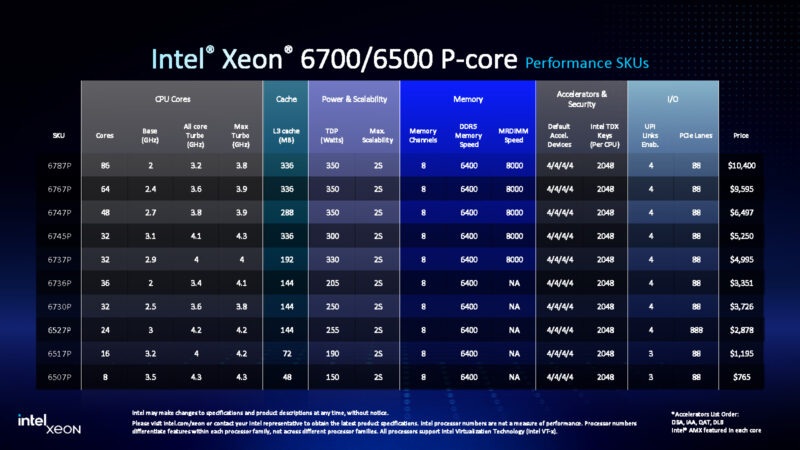
We think the Intel Xeon 6527P only has up to 88 PCIe Gen5 lanes, not 888. Also, a pattern seems that the SKUs based on the LCC design with up to 16 cores also have only three UPI links, not four. Those 8-16 core parts are priced attractively, and realistically, those looking at the Xeon 6300 series should be looking at these Xeon 6500P parts as alternatives unless they need those maximum clock speeds. Here are the scalable (4-8 socket) and mainstream parts:
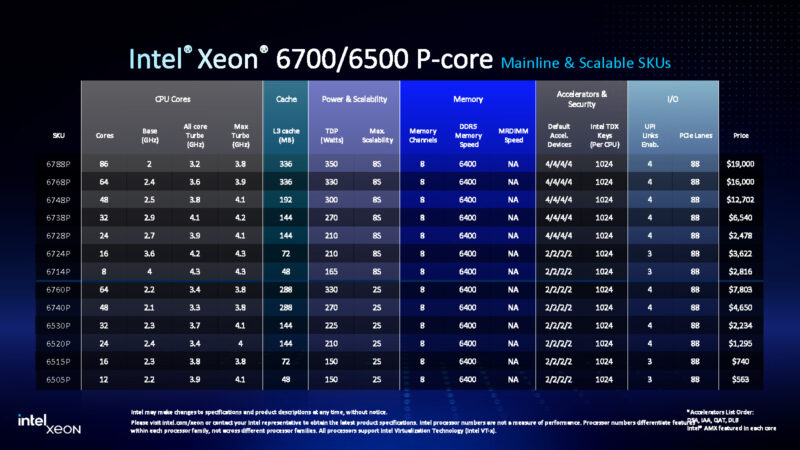
There are some excellent points here. First, Intel has finally decided to enable accelerators on all its parts. That is great and something I have been actively campaigning for. My point since the 4th Gen Intel Xeon Scalable “Sapphire Rapids” launch has been that if folks have to look up a specific SKU to know if they have a feature, it will hurt adoption. Now, if you want QAT, you have it with Xeon 6.
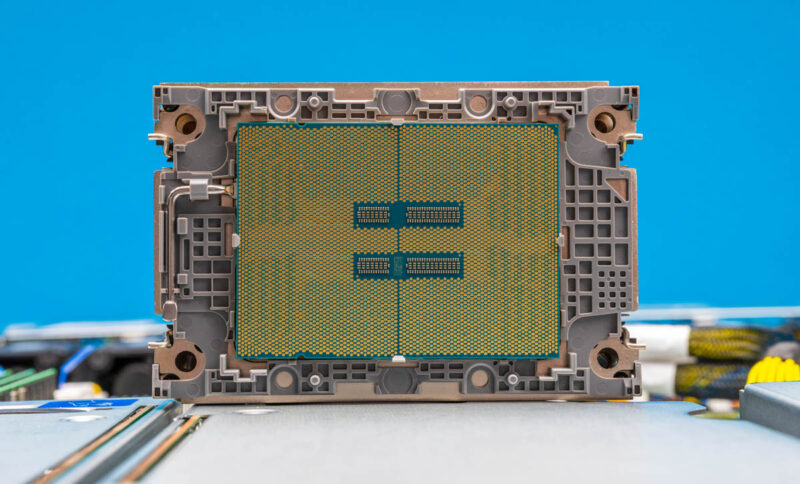
Some folks will point to the Intel Xeon 6788P and see $19,000 and say that is uncompetitive. The real point here is that it is an SKU for 4-socket and 8-socket systems. In a 2-socket system, you would get the Intel Xeon 6787P if you wanted 86 cores. These list prices are often meant to be discounted, and frequently inflated by vendors (hence why companies like Lenovo have $40K+ 5th Gen Xeon options on configurators.) There are also discounts and rebates available for partners. For example, in Q1 2025, a partner selling a top-end Xeon 6700P or 6700E in EMEA, for example, might earn 300 Matrix Points, while selling a Xeon 6900P might get them 400 points. If you are a hyper-scaler, then you are getting a considerable discount.
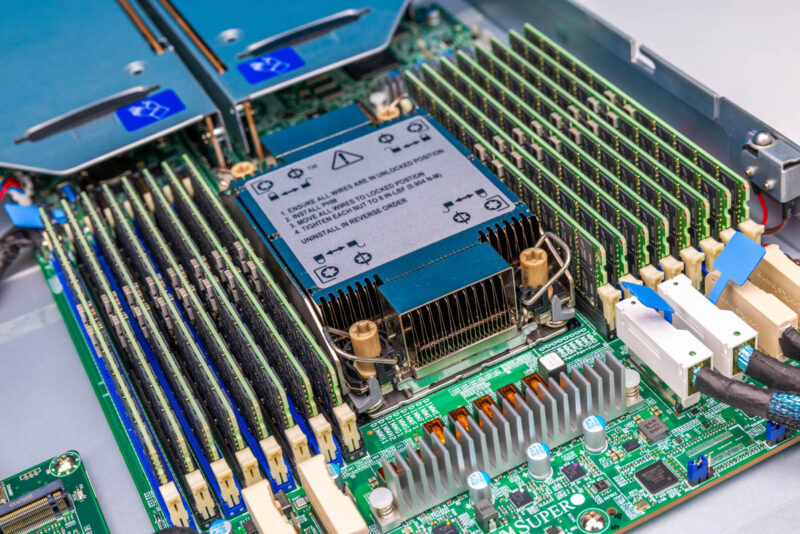
Still, there is room for improvement. For example, most folks are not deploying MCRDIMM/ MRDIMMs. Why not just have Xeon 6 with P-cores support 8800MT/s across the board? Why have the Xeon 6900P at 8800MT/s but the 6700P at 8000MT/s and only on select SKUs?
All told, Intel is moving in the right direction here. Still, considering that the majority of server CPUs are used in hyper-scalers, there is a lot of SKU differentiation in the minority market, especially with the 6900P series above and the 6700E series alongside these parts.
There is one other small change worth noting. Here is the motherboard for the R1S platform. You will notice that the PCH or platform controller hub is no longer on the motherboard. Intel has removed this legacy capability removing cost and a part that used power from the motherboard. It is a small step, but an important one to modernize Xeon and compete with AMD.
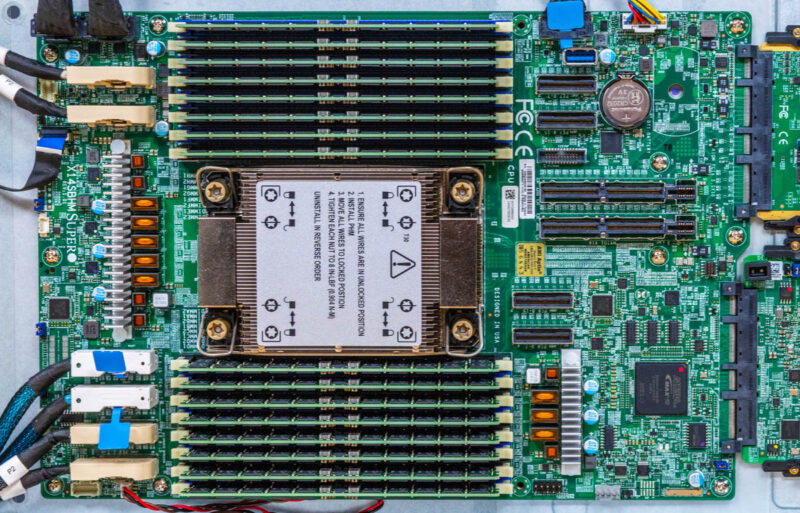
Next, let us talk about performance.

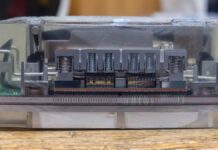
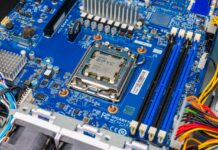

Another great analysis
These’ll outsell the 6900 series by many times. They’re not sexy but they’re enough for most people.
I’m still believing that the issue is the price of the newer chips. We used to be able to buy mid-ranged servers for under $5k. Now you’re talking $15k-20k. It’s great if they’re offering consolidation, but nobody wants to open their wallet on legacy CPU compute if they’re paying as much as they did for the older servers that are all running fine
You’ve colored me intrigued with this R1S business
Just want to say 8-socket 6700/86core, 4TB each.
It’s 688 cores and 32TB in a single x86 server pulling 2800W for CPU alone.
Some day I’d like to see that system, not that my budgets ever include that kind of thing, what use case? Some accounting program, or day-trading bot that wants a thread per trade which somehow is coded only in x86. VDI for 600 users on a single server? I mean you could run 1000 web servers, but why on this instead of a bunch of 1-2U servers. Same with container apps at AWS. what’s the use case?
Supermicro did this on Xeon 4th gen – 6U, 4x mainboard modular trays, vertical pcie in the back of the thing.
Honestly single socket systems are my favorite thing.
And a single socket system with enough PCIe bandwidth to have nearly zero restrictions on throughput between storage and networking is fantastic.
MDF it’s mostly apps like SAP HANA where you need so much memory in a single node. That’s why the cloud co’s all have instances with 4P and 8P. It’s a low volume business but high in the almighty dollar
@Jed J
I don’t know about that. The four customers that buy more than 50% of all servers worldwide primarily ship the highest density processors they can get their hands on. The Xeon 6900 parts are bought mostly by hyperscalers, these small baby xeons are designed for the rest of the market which is becoming so small they’re practically a footnote in server design. Thats why these launched so far later than the higher volume 6900 parts did.
The P-core parts with AMX are great for AI prototyping. GPUs with large GRAM are not very accessible under 10k.
I’d like to see how fast non-distilled AI interference runs on these SKUs.
The full models have 600 billion or more parameters, require 1TB RAM and could demonstrate the matrix hardware built-in. A comparison to the performance of large Power10 systems that also have built-in matrix units would be interesting as well as recent EPYC processors.
Xeon® 6787P High Priority Cores 36C C Low Priority Cores 50C P/E core?????????
Eric – good idea.
argus – I have an e-mail out to Intel on that. I think it is part of the power saving mode which one can select in BIOS, but will confirm. If you look at the Xeon 6781P we have the topology map on, those are all P-cores even though that has high and low priority as well.
Regarding to the high/low priority cores, it is part of the Speed Select Technology. By default, all cores are set to the same priority with the same base frequency and turbo frequency behavior. In some scenarios, the user may do bind their application process to a few cores and running at higher base or turbo frequency. They can set these cores to high priority (HP). Basically, it is about allocation of power budget. When some cores are running at higher frequency, some cores must give up some power budget and running at lower frequency. https://www.kernel.org/doc/Documentation/admin-guide/pm/intel-speed-select.rst